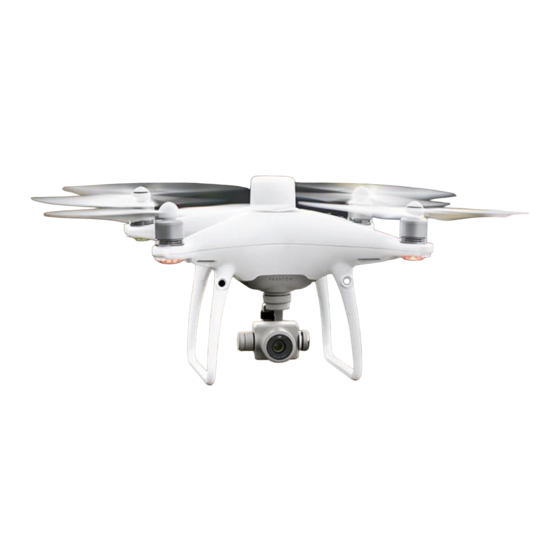dji Phantom 4 RTK Manual Penafian dan Keselamatan - Halaman 13
Jelajahi secara online atau unduh pdf Manual Penafian dan Keselamatan untuk Quadcopters dji Phantom 4 RTK. dji Phantom 4 RTK 19 halaman. Remote controller
Juga untuk dji Phantom 4 RTK: Panduan Memulai Cepat (10 halaman), Setup Manual (7 halaman), Panduan Pertanyaan yang Sering Diajukan (17 halaman)

Flight Modes, Functions and Warnings
Flight Modes
To avoid serious injury and property damage, observe the following rule:
The aircraft will fly in P-mode by default. It enters A-mode only when there is weak GNSS signal or when the
compass experiences interference where the Vision System is unavailable.
In A-mode, the Vision System and some advanced features are disabled. Therefore, the aircraft cannot
position or auto-brake in this mode and is easily affected by its surroundings, which may result in horizontal
shifting. Use the remote controller to position the aircraft.
Maneuvering the aircraft in A-mode can be difficult. Avoid flying in areas where GNSS signal is weak, or in
confined spaces. The aircraft will otherwise be forced to enter A-mode, leading to potential flight hazards,
please land it in a safe place as soon as possible.
P-mode (Positioning): P-mode works best when the GNSS signal is strong. The aircraft utilizes the GNSS and Vision
System to automatically stabilize itself, navigate between obstacles, and perform a mapping operation.
A-mode (Attitude): GNSS is NOT used for positioning and aircraft can only maintain altitude using the barometer. It
enters A-mode only when there is weak GNSS signal or when the compass experiences interference where the Vision
System is unavailable.
Failsafe and Return to Home
1. The Return to Home feature will NOT work if the GNSS signal is insufficient or if GNSS is not active.
2. Press the RTH (Return to Home) Button on the remote controller to bring the aircraft back to the Home Point. DO
NOT resort to turning off the remote controller to force the aircraft to return to Home Point.
3. Tall buildings may adversely affect the Failsafe function. Please adjust the aircraft altitude and speed while
returning home to avoid obstacles.
4. Make sure to always fly the aircraft within the transmission range of the remote controller.
5. Only use the Failsafe and Return to Home functions in emergency cases, as they may be affected by the weather,
the environment, or any nearby magnetic fields.
6. The aircraft cannot avoid obstacles during the Failsafe RTH when lighting condition is not ideal, or if the Vision
System is otherwise disabled. Therefore, it is important to set an appropriate Failsafe altitude before each flight.
7. When flying indoors, the aircraft cannot perform precision hovering when flying above certain surfaces. Refer to the
"Vision System and Infrared Sensing System" section for complete indoor flying criteria.
8. During the Failsafe RTH, the pilot may regain control of the aircraft if the remote controller signal is re-established.
Moving the left stick when the aircraft reaches 20 meters (65 feet) altitudes or beyond will cancel the ascending
process and command the aircraft to return to the Home Point immediately. Pressing the RTH button once during
the Failsafe RTH will cancel the RTH process immediately.
9. If the battery life so allows, the aircraft may first return to the last position where it had connection with the remote
controller during the Failsafe RTH. As a result, you may observe the aircraft first flying away from you, then
returning to the Home Point.
12
©
2018 DJI All Rights Reserved.
